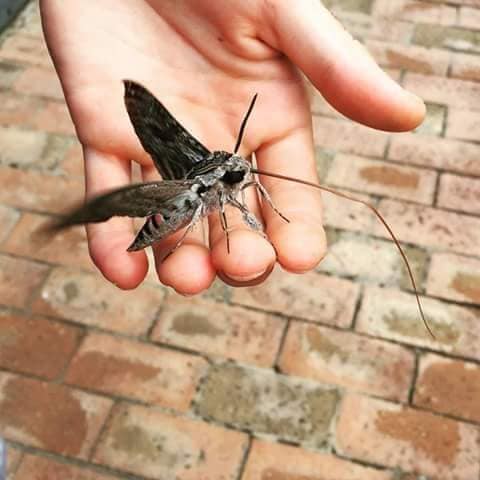Beyond Your Backyard - The Elusive Hummingbird Moth
By Kimberly J. Epp
Spring is here, and warmer weather is on it's way. Crocuses (or croci) are our first flowers, and will soon start rearing their heads...while soon thoughts of gardening come to mind. What flowers to plant? What colors are best? Native or non-native? Different flower species attract bees, butterflies, hummingbirds - and even insects such as hummingbird moths!
The Hummingbird Moth is an elusive little pollinator to keep an eye out for. You may think this tiny creature is a hummingbird, but the only similarities between the two species are that they are pollinators, have long tube-like proboscis tongues, and hover around flowers. One is an insect while the other is a bird.
Hummingbird Moth is the common name used for the Hummingbird Hawk Moth. Like a hummingbird, the moth makes a buzzing sound from its rapid wing movement. The moth's wingbeat can move at up to 70 beats per second, similar to the hummingbird's wing beat speed. The Hummingbird Moth can fly nearly 20 km/hour, while a Ruby-throated Hummingbird can fly up to 88 to 96 km/hour when it reaches updrafts during migration season.
This moth has a long tongue-like proboscis that rolls out of a coiled tube in order to reach down into the flowers to sip up the nectar. This "tongue" is twice as long as the moth's body. The moth also has large, fierce-looking eyes, a warning adaptation for predators as it resembles a bird more than a bug. These moths are up to 2 and 1/2 inches in length, about half the length of a hummingbird. They are covered with gray hairs with white, rusty red or brown markings that closely resemble feathers. Their wingspans range from 2 to 6 inches in length.
After mating, the female moth lays eggs on certain plant leaves - then the hatched caterpillar feeds on its host bush or vine. Hummingbird Moths actively feed on flower nectar in the daytime, but you may also get a glimpse of one feeding at dusk on night-blooming flowers such as the evening primrose or night blooming jasmine. They are attracted to brightly colored flowers such as the ones pictured. Keep your eye out for these insects in your flower garden this Spring.
Stay tuned for the next article on pollinator baths and feeders, followed by tick awareness. We need pollinators, so if you are thinking about spraying your dandelions this Spring, consider that they are the first flower available to the hungry bees. Help pollinators this Spring by growing a wide array of flowers.
-------------------------------------------------------------------------
Epp is an Environmental Educator and Writer and is also the President of the Moose Jaw Nature Society. She can be reached at kepp@shaw.ca.





